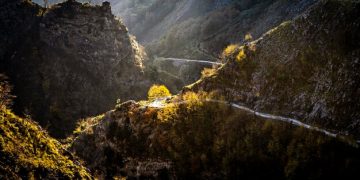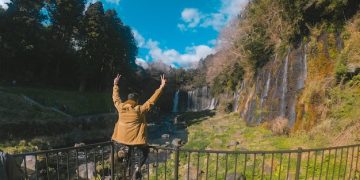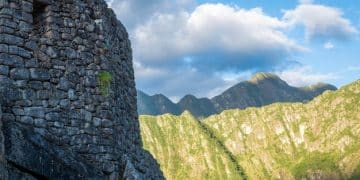Planning Your Amazon Rainforest Adventure in Peru: A US Traveler’s Checklist

Planning your Amazon rainforest adventure in Peru involves securing necessary travel documents, understanding the best time to visit, arranging transportation, booking lodging, obtaining necessary vaccinations, and packing appropriate clothing and gear.
Embarking on an adventure to the Peruvian Amazon rainforest? This checklist is designed to help US travelers meticulously plan their trip, ensuring a memorable and safe experience exploring one of the world’s most biodiverse regions. From essential documents to packing tips, we’ve got you covered. Let’s dive into **planning your Amazon rainforest adventure in Peru**.
Essential Travel Documents and Visas
Before even thinking about packing your bags, ensure your paperwork is in order. Having the correct documentation is paramount for a hassle-free entry into Peru and a smooth journey throughout your adventure.
Passport and Visa Requirements
US citizens typically don’t need a visa for tourist stays of up to 180 days in Peru. However, your passport must be valid for at least six months from your date of entry. Always double-check the expiration date to avoid any last-minute surprises. Keep a digital copy of your passport stored securely online and a physical copy separate from your actual passport.
Other Essential Documents
Besides your passport, consider bringing copies of your flight itinerary, hotel bookings, and any tour confirmations. It’s wise to have these documents both digitally and in print. Also, inform your bank and credit card companies about your travel dates to avoid any holds on your accounts.
- Passport valid for at least six months beyond your stay.
- Copies of flight and accommodation bookings.
- Travel insurance details.
- Bank contact information.
Ensuring your documents are in order well in advance of your trip will provide peace of mind. Nothing kills the excitement of an adventure like a delayed departure due to paperwork issues. Plan ahead and your Peruvian Amazon adventure will start off on the right foot.
Best Time to Visit the Peruvian Amazon
The Amazon rainforest experiences distinct wet and dry seasons, each offering a unique perspective on the jungle. Choosing the right time to visit can greatly impact your experience, so understanding the weather patterns is key.
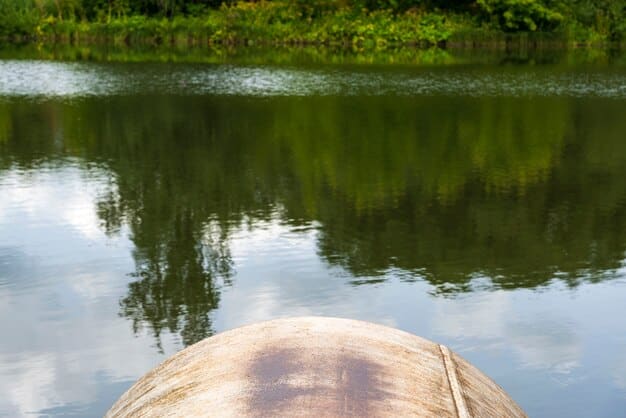
Wet Season (December to May)
During the wet season, the Amazon River and its tributaries swell, making it easier to navigate deep into the rainforest by boat. This is an ideal time for exploring flooded forests and spotting aquatic wildlife. Rainfall is frequent and humidity is high, so be prepared for wet conditions.
Dry Season (June to November)
The dry season offers lower humidity, less rain, and more sunshine. River levels are lower, which means some areas may be inaccessible by boat. However, hiking opportunities increase as trails become drier, and you’ll likely encounter more terrestrial wildlife.
- Consider the dry season for hiking and wildlife spotting.
- The wet season is perfect for river exploration and aquatic wildlife.
- Pack accordingly for either high humidity or dry heat.
- Check local weather forecasts before you travel.
Choosing the best time to visit the Peruvian Amazon depends on your priorities. Whether you’re interested in exploring flooded forests by boat or hiking through the jungle in search of wildlife, understanding the seasonal variations will help you make the most of your trip.
Transportation: Getting To and Around the Amazon
Navigating the Amazon requires careful planning, as transportation options are limited and often depend on the season. From flights to riverboats, understanding your options is crucial for seamless travel.
Flights to the Amazon
The most common entry points to the Peruvian Amazon are Iquitos and Puerto Maldonado. Both cities have airports with regular flights from Lima and other major Peruvian cities. Be sure to book your flights in advance, especially during peak season.
River Transportation
Once you arrive in the Amazon, riverboats are a primary mode of transportation. Smaller boats, known as “peque-peques,” are used for short distances, while larger boats are used for longer journeys. Some lodges offer private transportation for their guests.
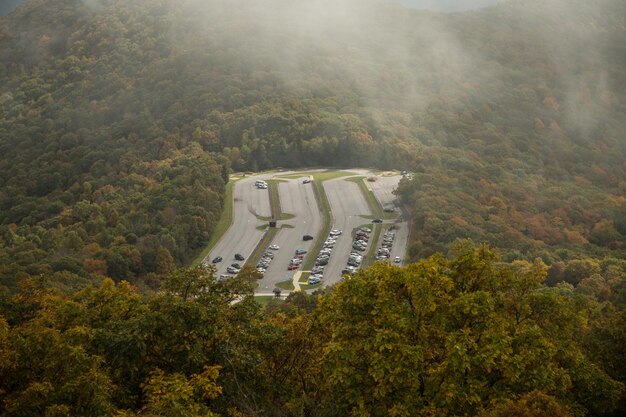
- Book flights to Iquitos or Puerto Maldonado in advance.
- Arrange river transportation through your lodge or tour operator.
- Consider private transportation for more flexibility and comfort.
- Factor in travel time between destinations, as river journeys can be slow.
Planning your transportation within the Amazon in advance is essential. Work with reputable tour operators or lodges to ensure safe and reliable transport. Understanding your options and the expected travel times will help you maximize your time exploring this incredible region.
Choosing Your Amazonian Lodge
Selecting the right lodge is crucial for an immersive and comfortable Amazon experience. Lodges range from basic to luxurious, each offering a unique way to connect with the rainforest. Consider your budget, desired level of comfort, and preferred activities when making your choice.
Types of Lodges
Eco-lodges are designed to minimize their environmental impact and offer sustainable tourism experiences. They often feature locally sourced food, employ local guides, and support conservation efforts. Luxury lodges offer enhanced amenities such as private balconies, gourmet dining, and spa services.
Factors to Consider
Think about proximity to attractions, available activities (such as wildlife viewing, jungle hikes, and cultural visits), and the lodge’s commitment to sustainability. Read reviews and compare offerings to find the perfect fit for your needs.
- Research eco-lodges for a sustainable and immersive experience.
- Consider luxury lodges for added comfort and amenities.
- Read reviews and compare offerings to find the best fit.
- Book in advance, especially during peak season.
Choosing your Amazonian lodge thoughtfully will enhance your overall experience. A well-chosen lodge can serve as your base for exploring the wonders of the rainforest, providing a comfortable and enriching environment to return to each day.
Health and Safety Precautions
Your health and safety should be top priorities when venturing into the Amazon. Consult your doctor about necessary vaccinations and other health precautions before your trip. Prepare a comprehensive first-aid kit to address minor injuries and ailments.
Vaccinations and Malaria Prevention
Consult your doctor regarding necessary vaccinations well in advance of your trip. Yellow fever and typhoid vaccinations are often recommended, as is malaria prophylaxis. Be sure to bring and use insect repellent containing DEET to protect against mosquito bites.
Essential First-Aid Kit
Pack a well-stocked first-aid kit that includes items such as antiseptic wipes, adhesive bandages, pain relievers, anti-diarrheal medication, and any personal medications you require. Electrolyte solutions can help prevent dehydration in the humid climate. Also, consider packing motion sickness medication, especially if you plan on spending a lot of time on boats.
- Consult your doctor about necessary vaccinations and malaria prevention.
- Pack a comprehensive first-aid kit with essential medications.
- Use insect repellent to protect against mosquito bites.
- Stay hydrated by drinking plenty of water and electrolyte solutions.
Taking the necessary health and safety precautions will allow you to fully enjoy your Amazon adventure with peace of mind. Prioritize your well-being by preparing in advance and following all medical recommendations. A safe and healthy trip is a fulfilling trip.
What to Pack for the Amazon
Packing appropriately is essential for a comfortable and safe trip to the Amazon rainforest. The climate is hot, humid, and often wet, so lightweight, breathable clothing is a must. Protect yourself from insects and the sun with suitable attire and gear.
Clothing and Footwear
Pack lightweight, long-sleeved shirts and pants to protect against insect bites. Choose moisture-wicking fabrics that dry quickly. Bring a lightweight rain jacket or poncho for sudden downpours. Sturdy, waterproof hiking boots are essential for jungle treks. Don’t forget thick socks to protect your feet.
Essential Gear
A wide-brimmed hat and sunglasses will shield you from the sun. Insect repellent containing DEET is crucial for preventing mosquito bites. A headlamp or flashlight is useful for navigating in the dark. Binoculars will enhance your wildlife viewing experiences.
- Lightweight, long-sleeved clothing for insect protection.
- Waterproof hiking boots for jungle treks.
- Insect repellent, sunscreen, and a wide-brimmed hat.
- Binoculars for wildlife viewing.
Packing the right gear can make a significant difference in your comfort and enjoyment of your Amazon adventure. Prioritize lightweight, protective clothing, and essential items that will help you stay safe and comfortable in the rainforest environment.
| Key Aspect | Brief Description |
|---|---|
| ✅ Documents | Passport validity, visa requirements, and copies of essential bookings. |
| 📅 Best Time | Consider wet (Dec-May) or dry (Jun-Nov) seasons based on your preferences. |
| 🚖 Transport | Flights to Iquitos or Puerto Maldonado and riverboats for local travel. |
| 🏨 Lodging | Choose eco-lodges or luxury options, booking in advance. |
Frequently Asked Questions
▼
It’s recommended to consult your doctor about vaccinations such as yellow fever and typhoid. Malaria prophylaxis is also often advised. Ensure you do this well in advance of your trip to allow enough time for the vaccinations to take effect.
▼
The dry season (June to November) offers less rain and more opportunities for hiking. The wet season (December to May) is ideal for river exploration and seeing aquatic wildlife, although rainfall and humidity are higher.
▼
Pack lightweight, long-sleeved shirts and pants to protect against insects. Choose moisture-wicking fabrics that dry quickly. Bring a lightweight rain jacket or poncho, and sturdy, waterproof hiking boots for jungle treks.
▼
Flights to Iquitos or Puerto Maldonado are the most common entry points. Riverboats, including peque-peques, are used for local transport. Arrange transport through your lodge or a tour operator for safety and reliability.
▼
Yes, eco-lodges offer sustainable and immersive experiences. They minimize environmental impact, use locally sourced food, employ local guides, and often support conservation efforts, making them a responsible choice.
Conclusion
With meticulous planning and preparation, your Amazon rainforest adventure in Peru promises to be an unforgettable experience. By ensuring your documents are in order, understanding the best time to visit, arranging reliable transportation, selecting appropriate lodging, and taking necessary health precautions, you’ll be well-equipped to immerse yourself in the unparalleled beauty and biodiversity of the Amazon.

